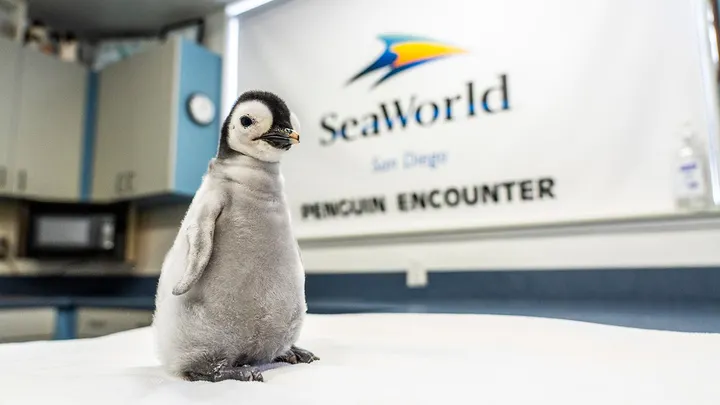In a remarkable feat that has sparked excitement and joy, SeaWorld San Diego recently announced the hatching of an emperor penguin chick, marking the first occurrence of such an event at the park in over 13 years. The female chick’s emergence from its shell on September 12th was not just a routine occurrence but required the careful and timely intervention of the zoo staff.
Justin Brackett, who oversees the aviary at SeaWorld as its birds curator, expressed his elation, remarking, “This is potentially the highlight of our decade, if not our entire year.”
Emperor penguins, which are native to the frosty terrains of Antarctica, have the distinction of being listed as a threatened species. At SeaWorld San Diego, a habitat mimicking the chilly environment of Antarctica at 25 degrees Fahrenheit (or minus 5 Celsius) houses 17 of these magnificent birds. This particular egg, a beacon of hope and continuation for the species, was laid on July 7.
The marine theme park and zoo is home to approximately 300 penguins spanning various species. Yet, the birth of the emperor chick holds a special place in the hearts of the SeaWorld team. Melissa Ramsey, who supervises the bird section and played a pivotal role in the hatching process, conveyed the immense pride and joy the staff feels regarding this rare occurrence.
To understand the significance, one needs to delve into the unique traits and lifestyle of the emperor penguin (Aptenodytes forsteri). Standing as the tallest and heaviest among all penguin species, emperor penguins can grow to heights of 3.7 feet (1.15 meters) and weigh as much as 99 lb (45 kg), as per data from the World Wildlife Fund (WWF). Their reproductive process is also distinct. While most penguin species lay multiple eggs annually, the female emperor penguin produces just one precious egg each year.
Typically, after laying the egg, the female emperor penguin heads back to the sea for nourishment, entrusting the male with the crucial task of incubating the egg for over two months, a period during which he abstains from eating. Adding to this fascinating process is the fact that these penguins often choose a lifelong mate, as stated by the WWF.
However, in this instance, the natural transfer of the egg from the mother to the father did not occur. Alert SeaWorld staff took the initiative and, upon observing the egg, noticed signs of life within on September 7th. When the anticipated hatching did not materialize even after 72 hours, the team took the extraordinary step of aiding the chick’s exit by creating a small opening in the egg shell over two subsequent days.
Further examination revealed that the chick had a beak abnormality which hampered its ability to hatch independently. To celebrate this special addition, SeaWorld is extending an invitation to the global community to participate in naming the chick. The public can cast their vote for one of three proposed names – Pearl, Pandora, or Astrid – through Instagram or email.
READ MORE:
